
New Zealand boat designer Rob Denney is a proa enthusiast. He built his first catamaran aged 14 and, after skipping his accountancy exams to do the Sydney-Hobart race, never looked back. He's spent his career racing, delivering and designing yachts, among them a catamaran he capsized in a 'gung-ho' two-handed round-Britain attempt (the boat, considered a shipping hazard, was destroyed by the Irish Navy) and a 30ft Iroquois catamaran propelled by a three-bladed windmill.
"That taught me a lot about engineering," says Rob. "We sailed at 6 knots into 20 knots of wind, which I considered a success. It was fun!"
Rob returned to Australia and launched a business selling cedar-strip kit boats, before building his first proa in 1995 using stitch and glue ply, an alloy mast and a 'bewildering variety' of steering combinations. At 16ft (5m), his proa was competitive with Lasers and slow beach cats, and taught him a lot about sailing proas. He continued to experiment with different ideas, changing rigs, beam arrangements, steering and hull size. "Proas range in size from small boats ballasted by baby coconuts to ocean crossing vessels capable of carrying a dozen people and supplies for many weeks," he says. "They were probably the first improvement made to a floating log by early sailors. A second, smaller log was lashed to a cross beam to stop the main log capsizing. Rigs were added later when technology allowed."
Racing proas
The first racing proa to gain celebrity was 40ft (12m) Cheers, which came third in the 1968 Singlehanded Transatlantic Race (OSTAR). The rig, rudders and accommodation were all in the windward hull but she was notoriously difficult to shunt. Her success triggered a spate of French-built single-handed proas, but after numerous capsizes and non-finishes they were banned from short-handed races in Europe.
هذه القصة مأخوذة من طبعة August 2023 من Practical Boat Owner.
ابدأ النسخة التجريبية المجانية من Magzter GOLD لمدة 7 أيام للوصول إلى آلاف القصص المتميزة المنسقة وأكثر من 9,000 مجلة وصحيفة.
بالفعل مشترك ? تسجيل الدخول
هذه القصة مأخوذة من طبعة August 2023 من Practical Boat Owner.
ابدأ النسخة التجريبية المجانية من Magzter GOLD لمدة 7 أيام للوصول إلى آلاف القصص المتميزة المنسقة وأكثر من 9,000 مجلة وصحيفة.
بالفعل مشترك? تسجيل الدخول

Orca sink yacht in Strait of Gibraltar
Spain's maritime rescue service, Salvamento Maritimo, has reported that a 15m (49ft) yacht sank in Moroccan waters in the Strait of Gibraltar following interaction with a pod of orca.

No kill cord or lifejackets were worn during fatal powerboat crash
A kill cord and lifejacket are useless unless worn-that's the warning from the Marine Accident Investigation Branch (MAIB), following its investigation into a powerboat crash that killed a 32-year-old woman and five-year-old girl on 2 October 2022.

Multihull sail work
Brush up on multihull sailing skills before heading off on charter with Gavin Le Sueur's guide to spinnaker handling, tacking and gybing

Five top causes of engine failure and how to prevent them
Jake Kavanagh talks to Sea Start marine engineer Nick Eales about how to avoid the five major causes of an engine breakdown at sea
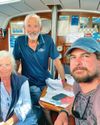
Sail the Atlantic with strangers
Would you sail across the Atlantic with someone you've just met? Ali Wood meets the cruising crews who've done just that

IZIBoat: simple sailing
Rupert Holmes sails an innovative catamaran design intended to widen participation in sailing among those with little time to get on the water in more conventional craft
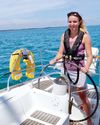
30 WAYS TO GET AFLOAT
From tall ships to small dinghies, you needn't own a boat to sail. Ali Wood looks at the options, and how skippers can also find crew
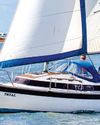
Boats for restoring under £20,000
Duncan Kent picks the best sub-35ft sail and power boats to look for when aiming to undertake a restoration on a budget
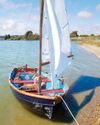
Seaworthy dinghies for less than £500
For low cost traditionally-styled GRP trailer-sailers, consider the Foreland and the Otter available at bargain basement prices
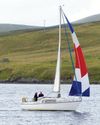
Playing with coloured sails
Maintaining an hourglass-shaped balloon and ratcheting up the log numbers